This is the second in a series of posts on the Touchpoint Ipiphany eCommerce Analysis and Reporting service. Our team of industry experts provides a comprehensive analysis of review data from competitors you choose along with your own business to uncover key opportunities to improve market share, RoI, and customer retention. In this post, we’ll explore a comprehensive trend analysis, expanding on the Walmart case study in order to understand what the key drivers of shifting scores have been during the COVID-19 lockdown period. You may also find our last post on competitor analysis helpful, as an investigation into the core market positioning of Walmart against an equivalent in a similar market.
What is a Trend Analysis?
You’re likely monitoring your eCommerce performance already, using Google Analytics or a similar tool. If so, you’ll understand the importance of monitoring trends in your data. Trend analysis gives you a benchmark of what to expect over a period of time - the ebb and flow that naturally happens as the year progresses - and provides the opportunity for you to understand growth over a set period.
This is incredibly important in any eCommerce business, however, there’s something more powerful lurking underneath it. Analysing customer review data using a text analytics tool like Ipiphany provides context for the trends you see in your data. It allows you to attribute a cause to the sharp drop in NPS your business may have experienced last month with enough time to fix it for this month and provides a way to continuously monitor the effectiveness of changes that have been made to improve issues. Additionally, this type of analysis can provide evidence of external drivers that would otherwise have remained completely hidden.
How Ipiphany drives a more powerful and insightful trends report
As part of our analysis, we investigate two key factors that influence changes in customer feedback - internal sources, and external sources. In a particularly profound example, let’s quantify the impact that COVID-19 had on all nine eCommerce businesses we analysed:
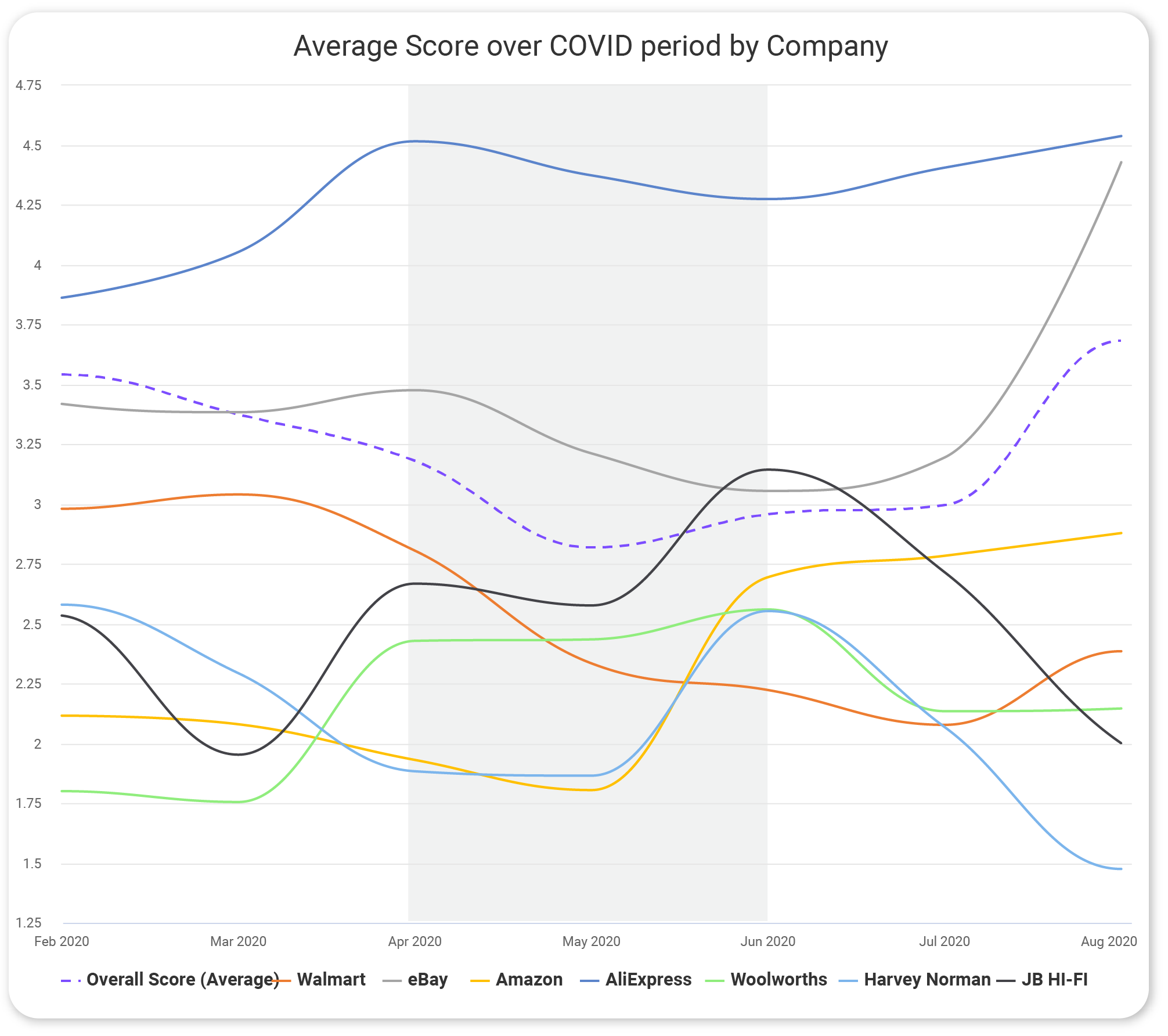
Nearly every business experienced a drop as lockdowns took place to stop the spread of the virus. The outlier, Aliexpress, shows a higher score throughout the US lockdowns after experiencing their drop in February. Each business reacted differently, and as such has recovered differently - some faster than others. This isn’t exactly revolutionary knowledge though - in fact, you likely already know how your score shifted during the COVID-19 lockdown. The missing link for most businesses is the cause behind this shift above market generalisation. Using Ipiphany, we can delve deeper to understand the individual aspects of this low score, as determined by consumers, to find out how to prioritise operational improvements that will have the biggest impact on platform performance and experience.
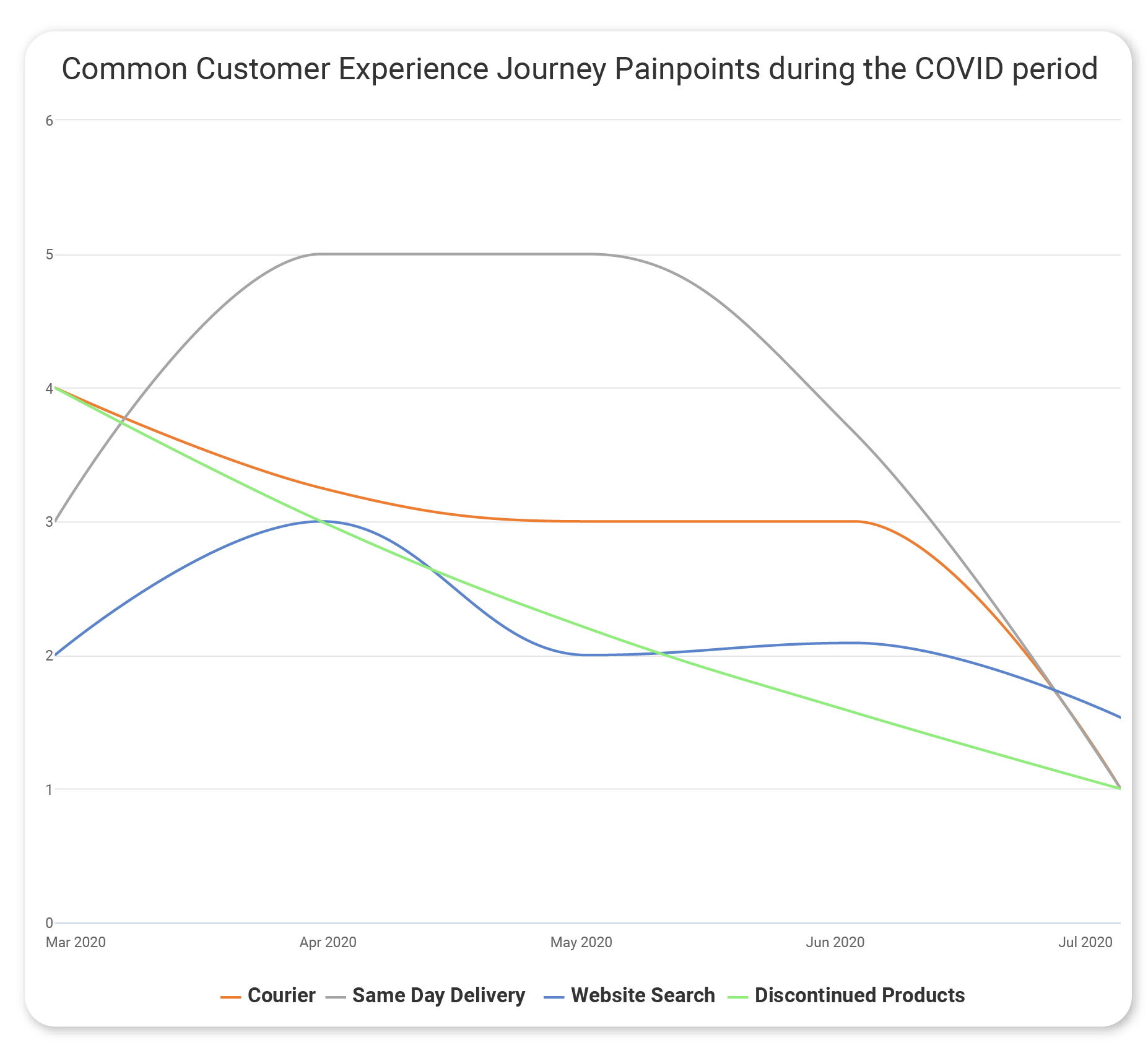
If we investigate further, we see that the drop in scores reflect businesses struggling to adapt to changing customer needs. Each of these businesses experienced internal issues that were exacerbated by COVID-19. At a high level, we can tell that common issues included operational centres being unprepared for the surge in online ordering, leading to delays in both dispatch and shipping (the ‘same day delivery’ and ‘courier’ categories) - while others involved businesses struggling to keep track of stock, and continuing to advertise items that had sold out or been discontinued.
AI-driven analysis reveals the cause behind the drop
To find out how Walmart can recover in the most efficient way, we must understand the internal aspects of Walmart’s slumped score over the COVID-19 period. To start our investigation, we’ll have a look at the way customers reviewed their experience on the Walmart eCommerce platform over this same period.
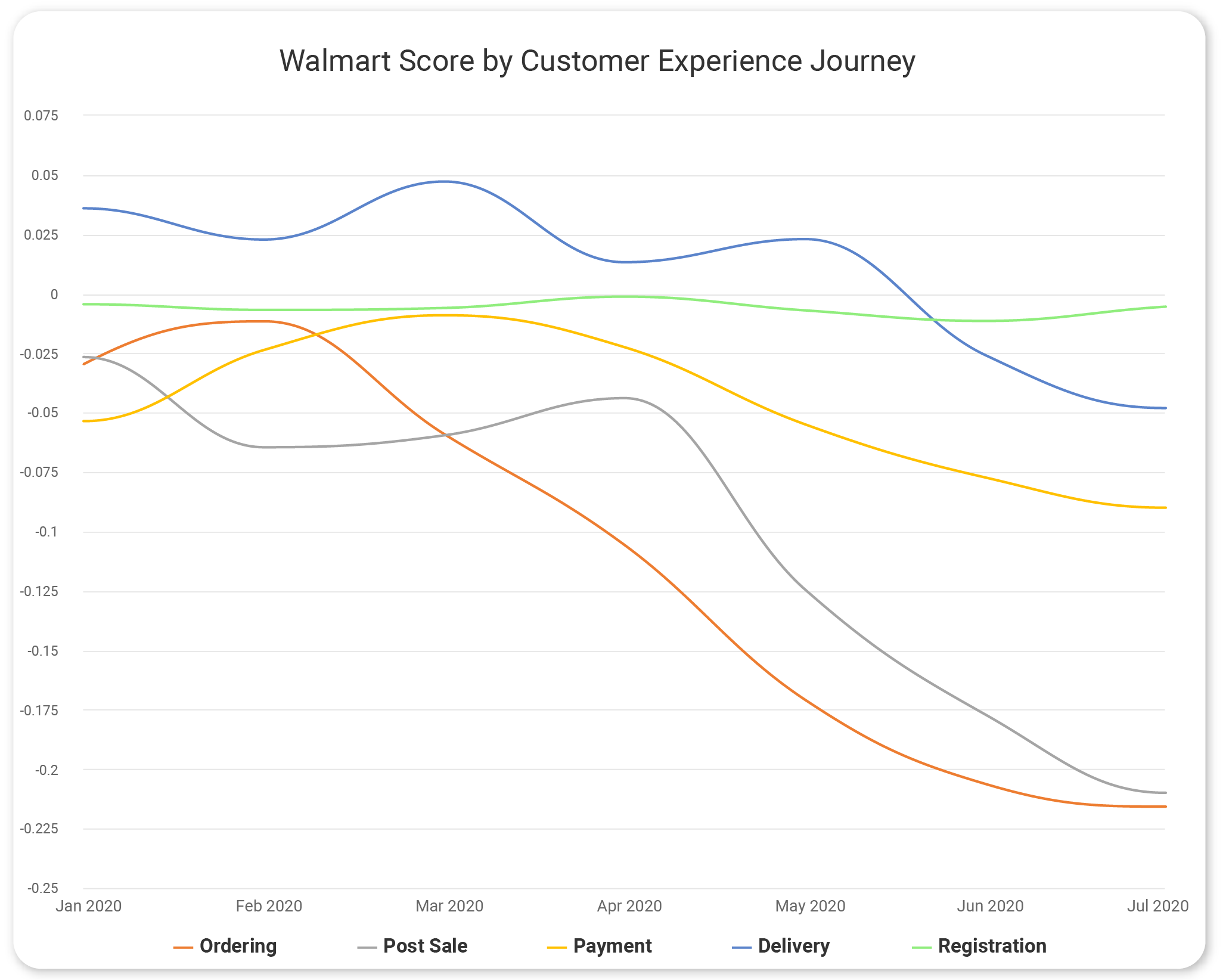
Immediately from this view, we can categorise feedback into areas impacting the customer journey and can start to narrow down the cause of the drop in Walmart’s score. While “Registration” remained steady and “Delivery” suffered only a minor dip in June and July, “Ordering” and “Post-Sale” both plummeted during the COVID-19 lockdown period and have not yet returned to pre-COVID-19 levels. Let’s have a deeper look into “ordering” to find the root issues behind this category.
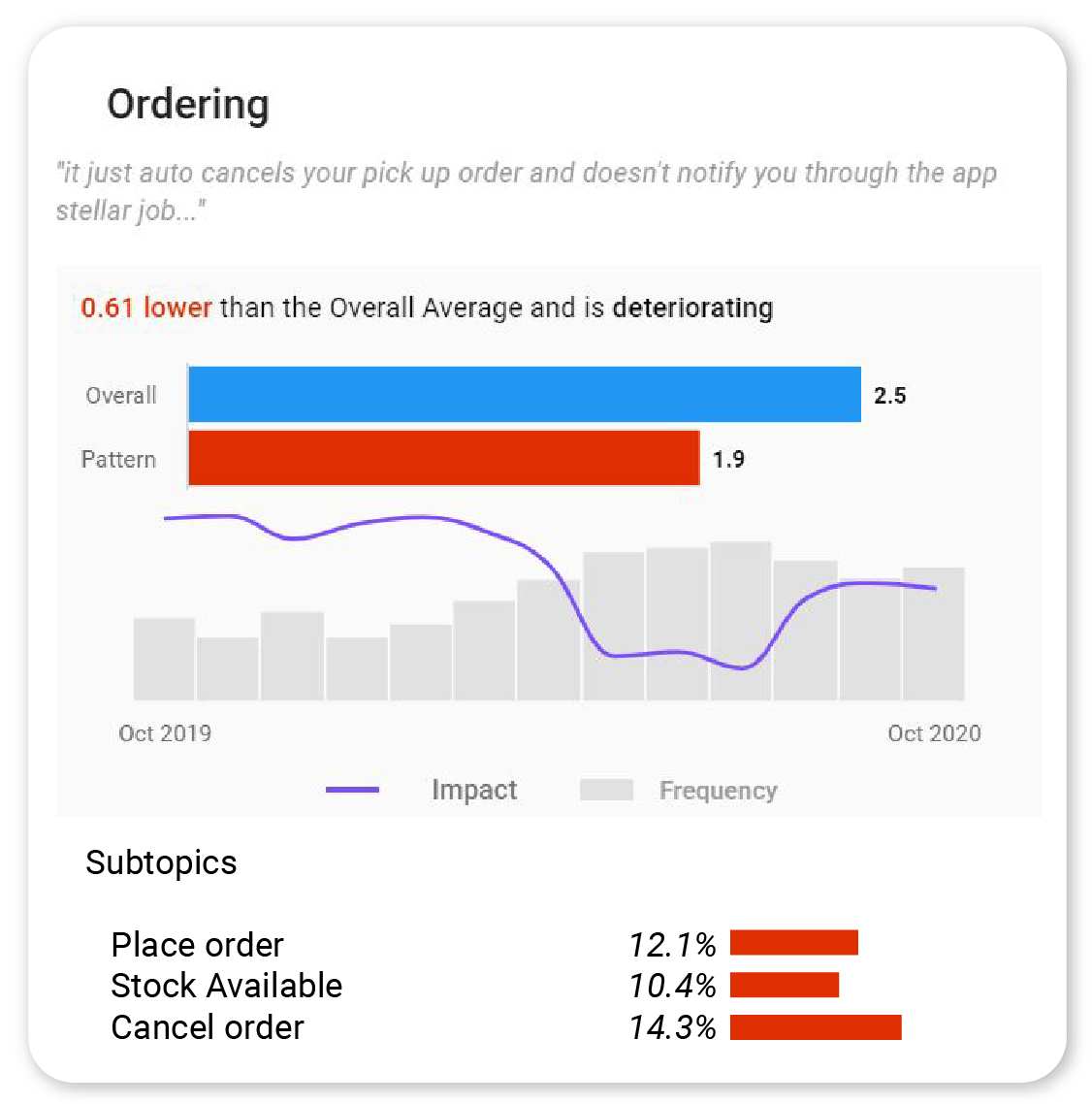
There are three topics related to the ordering process that customers are discussing with a high frequency. The first may be familiar - in the initial case study in this series we identified a stock tracking issue in Walmart’s eCommerce platform. The other two, however, are also contributing to the downturn in Walmart’s score. Ipiphany has categorised them as “Place Order” and “Cancel Order”. At this stage, we’re still looking for the root cause: Why are “Place Order” and “Cancel Order” causing so much frustration for customers? Our final step is to filter these topics to find the level of detail that Walmart needs to solve this problem.
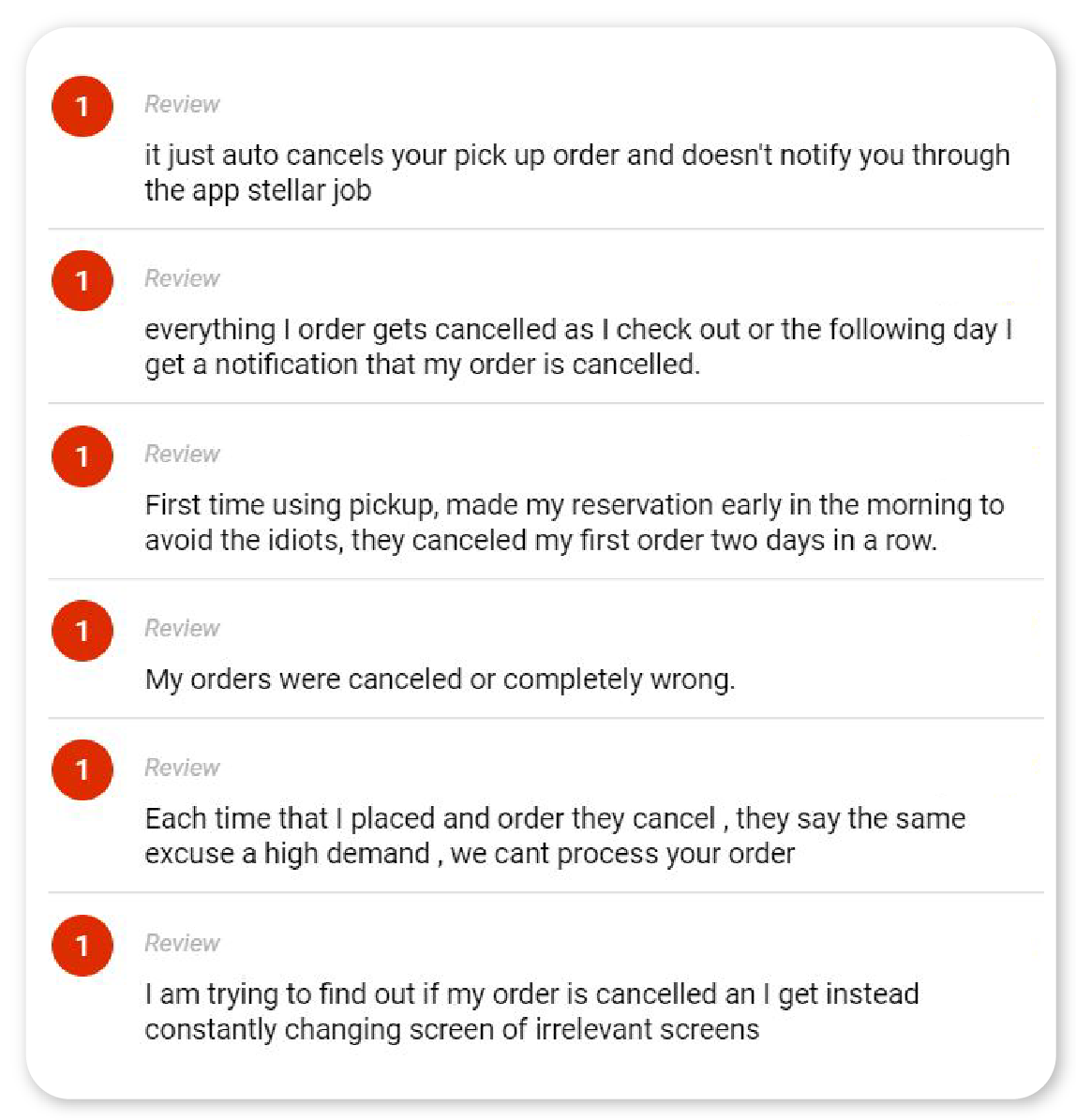
With the click of a button, we can isolate the customers who are discussing these issues. We’ll investigate “Cancel Order” now, and look at “Place Order” next week in the final instalment in this series. While initially based on the name of the topic, you might assume that “Cancel Order” meant that customers were experiencing issues cancelling their order - however, the main cause of the problem seems to be Walmart cancelling grocery order slots for customers who had already placed their orders.
A customer places an order, and due to the high frequency of online grocery orders during the COVID-19 lockdowns, they are bumped off the list and their order is cancelled. There does not appear to be a system set up to notify customers, and many note that orders are cancelled completely instead of rescheduled, meaning the customer has to start their order all over again if they’d still like to receive it.
Given the exponential increase in grocery orders during this period, this type of issue is not unexpected: Walmart could mitigate customer frustration in this instance by increasing the number of grocery delivery slots, although this may not be sustainable post-lockdown. Instead, they may wish to start by implementing a notification system and a time-change option that allows customers to reschedule an order if the time slot they chose becomes unavailable. Customers discussing this issue assign Walmart an average score of 1.3 (compared to the total average of 2.5): solving this specific issue for customers would result in a total score increase of over .2 points.
Next week, we’ll continue this investigation and use what we learned from the competitor analysis as well as today’s trends analysis to uncover the granular detail behind another issue causing a significant change in Walmart’s score - causing customer frustration and churn - and offer enough granular detail that the problem can be solved. If you would like to understand how to leverage AI customer analytics and get data-driven results for your business, get in touch today to chat with our experts.





